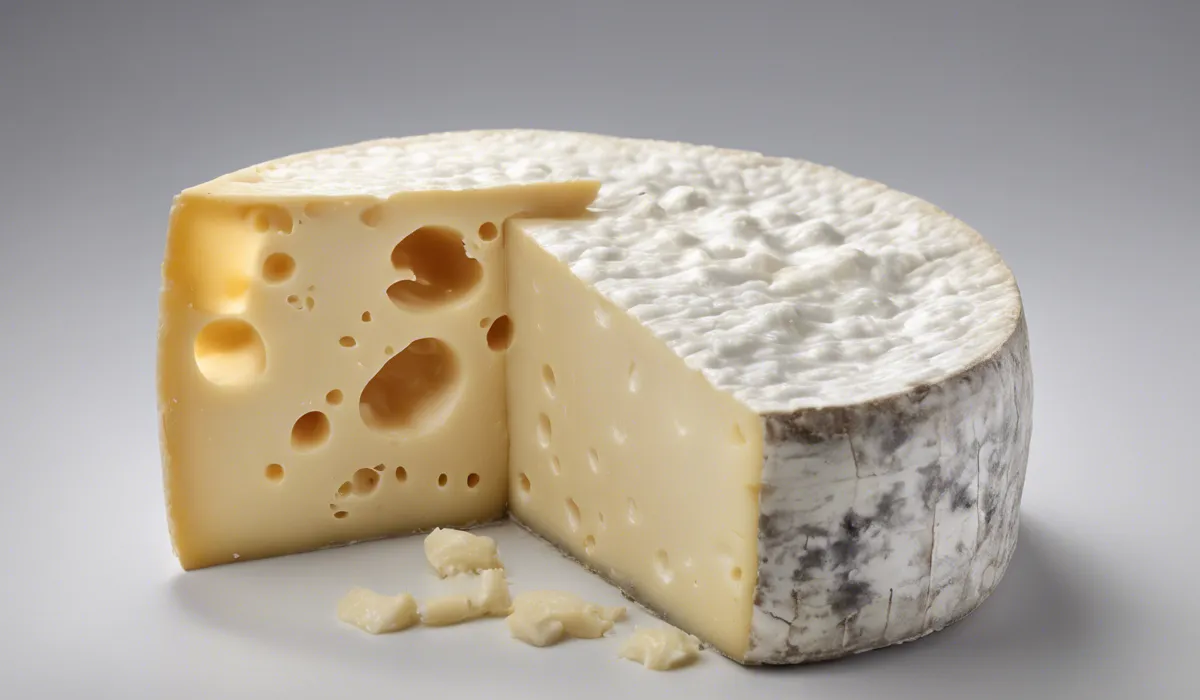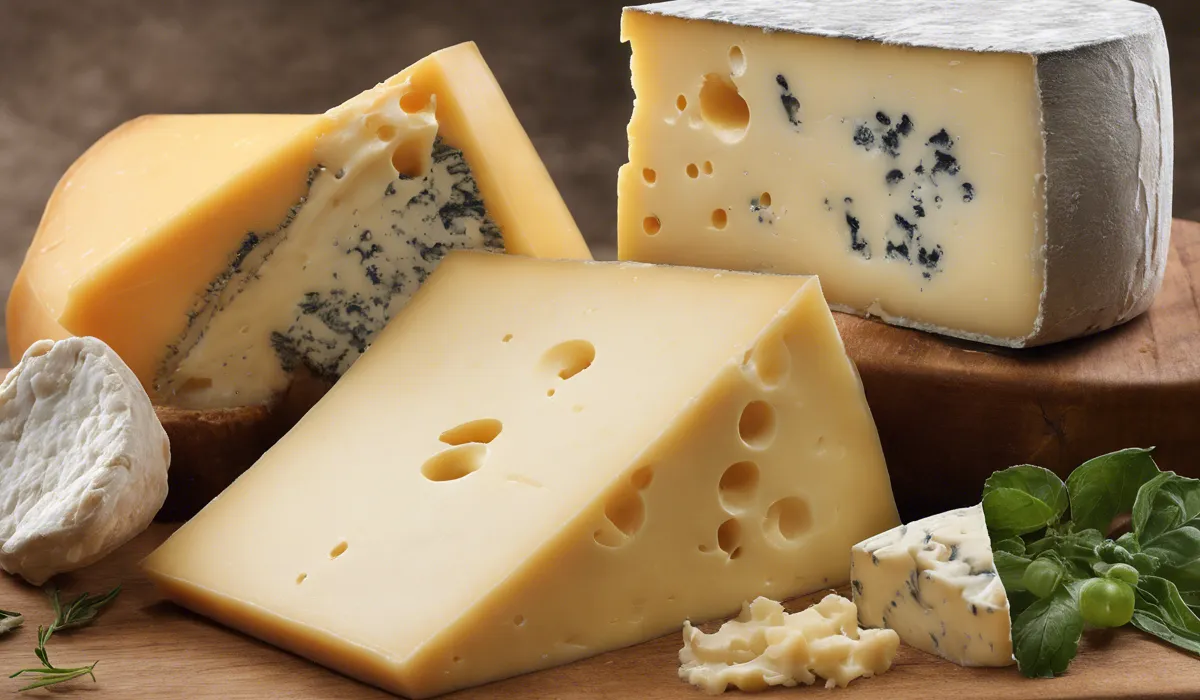White mold on cheese is generally not dangerous and is often a part of the cheese aging process, as seen in Brie and Camembert. However, if the white mold is unintended and appears on cheese not meant to have it, it could indicate spoilage and potential health risks. Always check the type of cheese before consumption.
Understanding White Mold on Cheese

Explanation of What White Mold Is
White mold on cheese is a type of fungus that plays a crucial role in the development of many cheeses.
It is often fluffy or velvety and can be a natural part of the cheese’s rind. This mold is not just a random occurrence; it is a carefully selected strain that cheesemakers use to add flavor, texture, and character to their products.
Different Types of Mold That Can Be Found on Cheese
Cheese can host various molds, including blue, green, black, and white varieties. Each type of mold has a different role.
Blue mold, for instance, is used in creating cheeses like Gorgonzola and Roquefort, while white mold is associated with Brie and Camembert. Not all molds are desirable; some may be signs of spoilage.
Role of White Mold in Cheese Production and Maturation
White mold is essential for the ripening process of certain cheeses. It helps break down the cheese’s structure, leading to a soft and creamy texture.
The mold also imparts a distinct earthy flavor that is prized by cheese lovers. Without white mold, cheeses like Brie and Camembert would not have their unique taste and texture.
Identifying the Difference Between Intentional White Mold and Contamination
It is important to distinguish between white mold that is part of the cheesemaking process and mold that indicates spoilage.
Intentional white mold has a uniform appearance and is usually found on the rind. In contrast, unexpected mold may appear blotchy, may be accompanied by off-smells, and can grow on parts of the cheese where mold should not be present.
Health Implications of White Mold on Cheese

Safety Profile of White Mold Used in Cheesemaking
The white mold used in cheesemaking is generally safe for most people to eat. It is carefully cultivated and monitored to ensure it does not produce harmful toxins.
Cheesemakers select strains that are edible and contribute positively to the cheese’s overall sensory qualities.
Possible Health Risks Associated With Consuming Contaminated or Spoiled Cheese
While white mold is typically safe, consuming contaminated or spoiled cheese can pose health risks.
Harmful bacteria, such as Listeria, E. coli, or Salmonella, can grow alongside mold on improperly stored or old cheese.
These bacteria can cause foodborne illnesses, which can be particularly severe for vulnerable individuals.
How to Tell If the Mold on Cheese Is Harmful?
To determine if the mold on cheese is harmful, look for irregular patterns of mold growth, discolorations, or a foul odor.
If the cheese was not meant to have mold, any mold present could be a sign of spoilage. When in doubt, it is safer to discard the cheese.
Guidelines for Consumption of Mold-Ripened Cheeses for Certain Populations
While mold-ripened cheeses are safe for most people, certain populations such as pregnant women and immunocompromised individuals should be cautious.
These groups should avoid cheeses that may contain harmful bacteria. Pasteurized mold-ripened cheeses are a safer option for these sensitive populations.
Best Practices for Handling Mold on Cheese

Proper Storage of Cheese to Prevent Unwanted Mold Growth
Storing cheese properly is key to preventing unwanted mold growth. Cheese should be kept at the right temperature, typically in the refrigerator, and wrapped in materials that allow it to breathe, such as wax paper or parchment.
Avoid plastic wrap, which can create a moist environment that promotes mold growth.
Tips on How to Handle Moldy Cheese
If you encounter mold on cheese, assess whether it is intentional or not. For cheeses meant to have white mold, simply enjoy them as they are. If the mold is unexpected, consider the type of cheese.
Hard cheeses can sometimes be saved by cutting away the mold, while soft cheeses should be discarded.
When to Cut Away the Mold and When to Discard the Cheese?
As a rule of thumb, hard cheeses with unwanted mold can have the moldy part cut away; ensure to cut at least an inch around the mold to avoid cross-contamination.
Soft cheeses with unexpected mold, however, are more susceptible to bacteria and should be thrown away to ensure safety.
Cleaning and Maintenance Tips to Avoid Cross-Contamination With Other Foods
Keeping your cheese and preparation areas clean is essential to avoid cross-contamination.
Use separate utensils and cutting boards for mold-ripened cheeses, and clean all surfaces thoroughly after handling any cheese. This helps ensure that mold and bacteria from one food do not spread to others.
FAQs About White Mold on Cheese
Is white mold on Brie and Camembert cheeses dangerous?
No, white mold on Brie and Camembert is not dangerous; it is a natural part of the cheese aging process and is safe to eat.
Can white mold indicate spoilage on cheese?
Yes, if white mold appears on cheese not intended to have it, such as cheddar or mozzarella, it could indicate spoilage and potential health risks.
Should I eat cheese that has unintended white mold?
No, it is not recommended to eat cheese with unintended white mold as it may pose health risks.
Is it safe to scrape off white mold on cheese?
If the white mold is not a part of the cheese’s aging process, it’s safer to discard the cheese rather than scraping off the mold.
How can I tell if white mold on cheese is safe?
To determine if white mold on cheese is safe, check if the cheese is meant to have mold as part of its aging process, like Brie or Camembert. If not, it may not be safe.
Final Thoughts
White mold on cheese like Brie and Camembert is typically safe, being part of their aging process.
Yet, white mold on cheeses not designed to develop such mold may be a sign of spoilage, posing health risks. It’s crucial to understand the cheese type and its aging process before determining if the mold is harmful.
